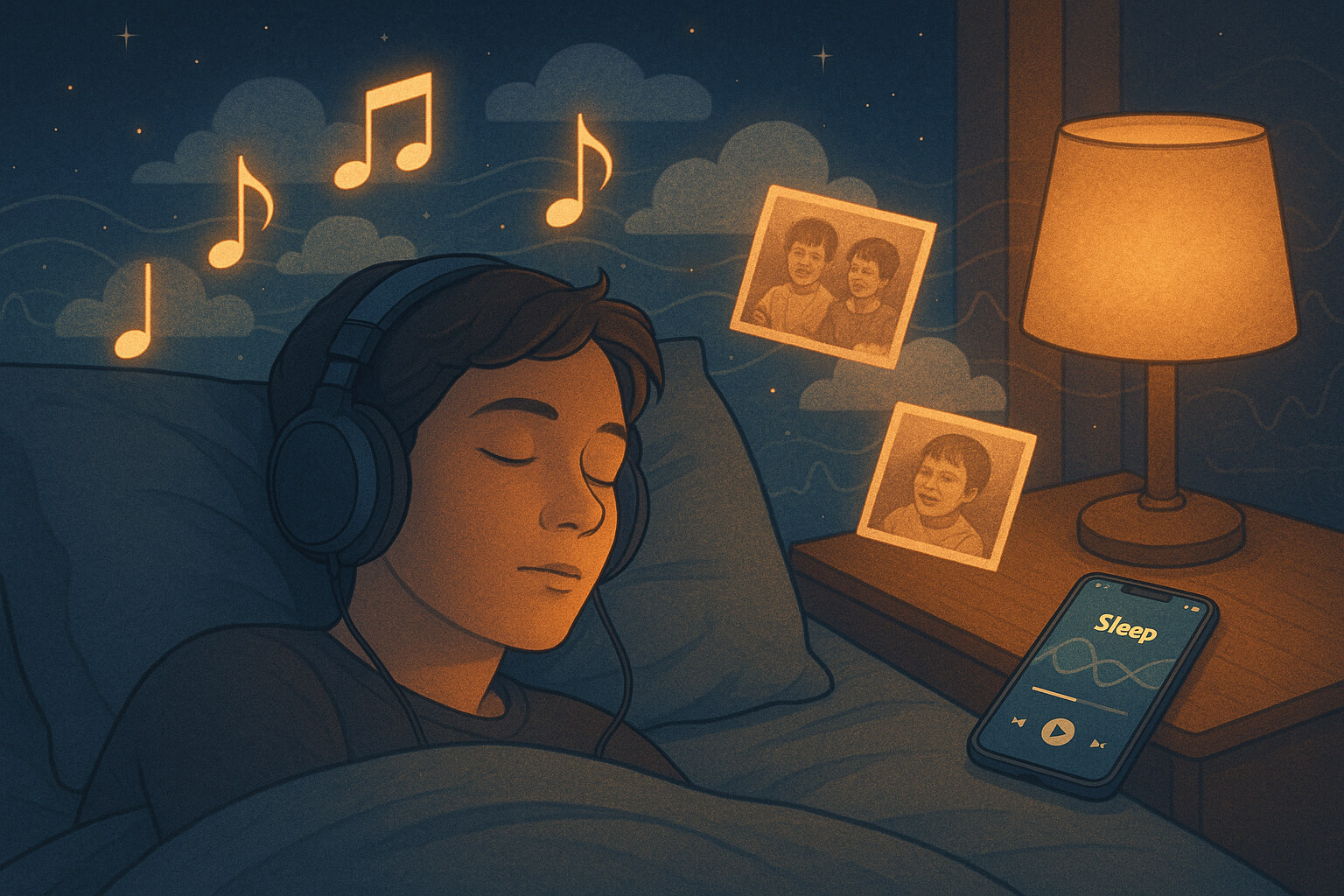July 08, 2025

Tossing and turning at night? You’re not alone. Millions of people struggle with falling asleep or staying asleep, and one increasingly popular (and research-backed) solution is music. But not all music helps—and the type of sound you choose can mean the difference between sweet dreams and midnight frustration.
In this article, we'll dive into how music affects your sleep, which types of music work best for promoting rest, and how you can curate the perfect sleep soundtrack to help you relax and drift into a deep, restful sleep.
When you listen to music, your brain doesn't just passively process sound. Music deeply engages various regions of your brain, influencing your physical and emotional states. Here's how it works:
Over time, regularly pairing a particular type of music with your bedtime routine can help train your brain to associate that music with sleep. This creates a conditioned response where simply hearing those familiar melodies signals to your brain that it’s time to unwind and rest.
Music with a slow tempo (around 60–80 BPM) is particularly effective for sleep, as it mirrors your resting heart rate and helps calm the nervous system. Classical music, often instrumental, is an excellent choice for people who need to quiet their minds and avoid the distraction of lyrics.
Want something custom-built? Try the AI Music Generator to create peaceful, mood-matching sleep music in seconds. It’s perfect if you’re looking for an ambient, personalized sleep soundtrack.
For many people, the sound of nature or white noise is incredibly effective at promoting sleep. Rainfall, ocean waves, wind, and forest ambiance not only create a soothing environment, but they also help mask disruptive external sounds—such as traffic, neighbors, or other environmental noises—that might otherwise keep you awake.
Download 50+ Royalty-Free MP3 Tracks including sleep-safe soundscapes and ambient loops. Ideal for creating a peaceful sleep environment with minimal effort.
For some people, meditative music or binaural beats are the key to reaching a deeply relaxed state before bed. Binaural beats are two different frequencies played in each ear that create a third frequency in the brain, guiding you into specific brainwave states like alpha (relaxed) and theta (drowsy or deeply relaxed). These brainwave states are perfect for facilitating restful sleep.
Try Weekly Music Drops for curated sleep soundtracks delivered to your inbox, perfect for your meditation or bedtime routine.
The ideal duration of listening to music before bed varies from person to person, but generally, it’s recommended that you listen for 15–45 minutes. This allows your body enough time to relax and shift into a more restful state before drifting off to sleep.
When curating a sleep playlist, aim for a collection of music that will create a gradual descent into relaxation. Here's what you should focus on:
Don’t know where to start? Download Our Curated Pack of 100 Royalty-Free Tracks that includes ambient, lo-fi, and nature-based audio—perfect for bedtime use.
Research backs up the idea that music can significantly improve the quality of sleep. Here are some insights from recent studies:
Want a more personalized approach to your sleep music? Book a Free 15-Minute Music Production Consultation to learn how to create your own custom sleep soundscapes, designed specifically to help you drift off and stay asleep longer.
Music isn’t just entertainment—it’s a powerful tool for relaxation and rest. Whether it's classical piano, the sounds of nature, or AI-generated ambient pads, the right sound can help quiet your mind and lead you into a deep, restful sleep.
So tonight, instead of counting sheep, press play and drift away.
Stay up to date with the latest tips, expert insights, product reviews, and step-by-step guides to help you grow, create, and succeed—no matter your industry or passion.